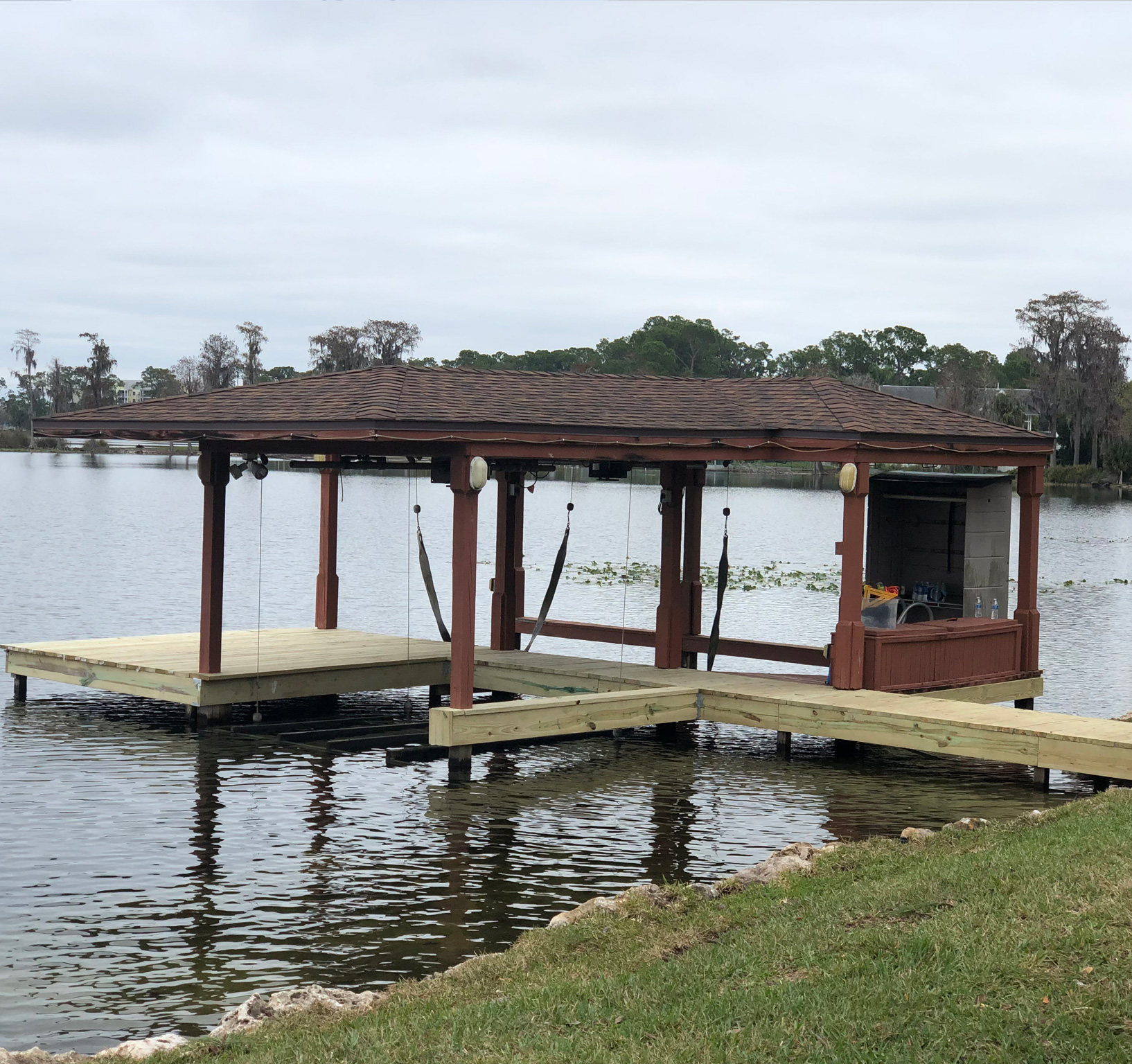The Significance of Timely Dock Repairs for Waterfront Safety And Security
The Significance of Timely Dock Repairs for Waterfront Safety And Security
Blog Article
Reliable Dock Repair Techniques: Guaranteeing Structural Integrity
Making sure the structural stability of docks via reliable fixing strategies is paramount for the longevity and safety and security of aquatic centers. This includes a multi-faceted strategy starting with extensive evaluations using advanced modern technologies like finder equipment and remotely operated vehicles (ROVs) to discover both noticeable and hid problems. Subsequently, choosing the right repair work products, such as composite materials and corrosion-resistant alloys, is vital for sturdiness. Architectural support methods, consisting of the execution of cross-bracing systems and load-distribution plates, play a crucial duty in mitigating anxiety points. The significance of these techniques ends up being obvious when discovering sophisticated repair approaches and preventative maintenance strategies.
Assessing Dock Damage
Evaluating dock damage is a critical initial action in guaranteeing the architectural honesty and safety of any type of docking center. Key facets to check out consist of the dock's structure, pilings, decking, and hardware (Dock Repairs).
Structural designers or certified assessors generally execute these analyses using specialized techniques and devices. As an example, underwater inspections may utilize sonar tools or from another location operated lorries (ROVs) to spot immersed damages. Above water, aesthetic assessments are enhanced by utilizing dampness meters and various other diagnostic devices to reveal underlying problems not instantly noticeable to the naked eye.

Deciding On Repair Products
Choosing the ideal repair work products is a pivotal action in the dock repair process, one that directly affects the durability and performance of the repaired framework. Material option should be driven by factors such as environmental conditions, load-bearing needs, and compatibility with existing dock components. For circumstances, wood is a standard choice for anchors because of its natural durability and aesthetic appeal. Choosing the best type of timber, such as pressure-treated lumber or naturally rot-resistant varieties like cedar or teak wood, is crucial to withstand water settings.
Along with wood, composite materials are increasingly popular because of their sturdiness and reduced maintenance demands. Compounds, typically made from a mix of plastic and timber fibers, provide excellent resistance to rot, insects, and UV damages. For steel docks, selecting corrosion-resistant alloys such as galvanized steel or marine-grade aluminum is important to protect against corrosion and ensure architectural stability in saline water problems.
Epoxy resins and marine-grade sealers are important for fixing fractures and sealing joints, offering a waterproof obstacle and improving the dock's overall stamina. By carefully choosing high-grade products, dock repair services can accomplish long-lasting outcomes, thereby guarding against future destruction and ensuring safe, trustworthy use.
Architectural Reinforcement Methods
Effective architectural support strategies are critical in making sure the stability and long life of dock fixings. One basic approach involves making use of steel or composite reinforcement bars (rebar) within concrete structures. Rebar gives extra tensile stamina, stopping fractures and distributing loads extra uniformly. This method is specifically reliable for anchors exposed to heavy tons or rough environmental problems.
An additional vital method is the application of fiber-reinforced polymers (FRP) These products use high strength-to-weight ratios and excellent resistance to deterioration, making them suitable for reinforcing wood or concrete anchors. FRP can be used in strips or sheets and adhered with epoxy resins to boost structural stability.
Bracing and anchoring systems also play a vital function in structural reinforcement. Cross-bracing, using metal or wooden beams, can neutralize lateral pressures, lowering swaying and movement. Anchoring systems, such as helical piers or driven stacks, provide a stable foundation by transferring tons to much deeper, you can look here much more stable soil layers.
Finally, the assimilation of load-distribution plates can help distribute weight a lot more evenly across the dock's surface area, mitigating localized stress factors. These strategies collectively ensure that docks remain risk-free and durable, qualified of enduring the rigors of their functional environment.
Advanced Repair Work Techniques

Another sophisticated strategy entails undersea welding, which permits repair services to be conducted without the requirement to dewater the location. This approach is especially beneficial for resolving architectural problems in immersed dock elements, making sure very little disruption to procedures. Improved welding strategies, paired with robotic systems, deliver precision and integrity, thus prolonging the lifespan of the dock.
In addition, cathodic defense systems are implemented to protect go now against rust in metallic dock structures. By making use of sacrificial anodes or pleased existing systems, these strategies effectively reduce the electrochemical procedures that lead to material deterioration.
Lastly, advanced tracking technologies, such as architectural health tracking (SHM) systems, give real-time information on the problem of dock frameworks. These systems make it possible for aggressive upkeep and timely treatments, eventually making sure the long-lasting structural integrity of the dock.
Upkeep and Prevention
Maintenance and avoidance are basic ideas that underpin the longevity and safety of dock structures. Regular inspections are extremely important, permitting early discovery of damage, possible weaknesses, and ecological effects. A proactive strategy, including regular checks for corrosion, rot, and structural changes, minimizes expensive repair services and lengthens the dock's operational life.
Preventative measures should consist of using safety finishings to steel elements to defend against rust and utilizing cured wood to stand up to degeneration. In addition, ensuring proper water drainage and ventilation can prevent water buildup, which is a common source of structural deterioration. Incorporating high quality materials and adhering to supplier standards during building and repair service stages additionally play essential roles in improving longevity.

Educating personnel in dock maintenance ideal methods guarantees regular application of safety nets. Leveraging technical breakthroughs, such as drones for wikipedia reference inspections and sensing units for real-time surveillance, can better improve upkeep initiatives. By focusing on maintenance and avoidance, dock proprietors can ensure structural stability, operational safety and security, and affordable administration over the dock's life-span.
Conclusion
In final thought, keeping the architectural integrity of marine centers requires comprehensive dock repair work methods. Advanced repair techniques, combined with regular maintenance techniques, guarantee the dock remains risk-free and functional under varied ecological conditions.
Ensuring the architectural integrity of anchors through reliable repair methods is extremely important for the longevity and safety of marine facilities.Choosing the appropriate repair work products is a critical action in the dock reconstruction process, one that directly affects the longevity and efficiency of the fixed framework.Efficient structural reinforcement techniques are essential in guaranteeing the stability and longevity of dock repairs. By focusing on upkeep and avoidance, dock proprietors can make sure architectural honesty, functional security, and economical management over the dock's lifespan.
In conclusion, keeping the architectural integrity of aquatic facilities demands extensive dock repair work methods.
Report this page